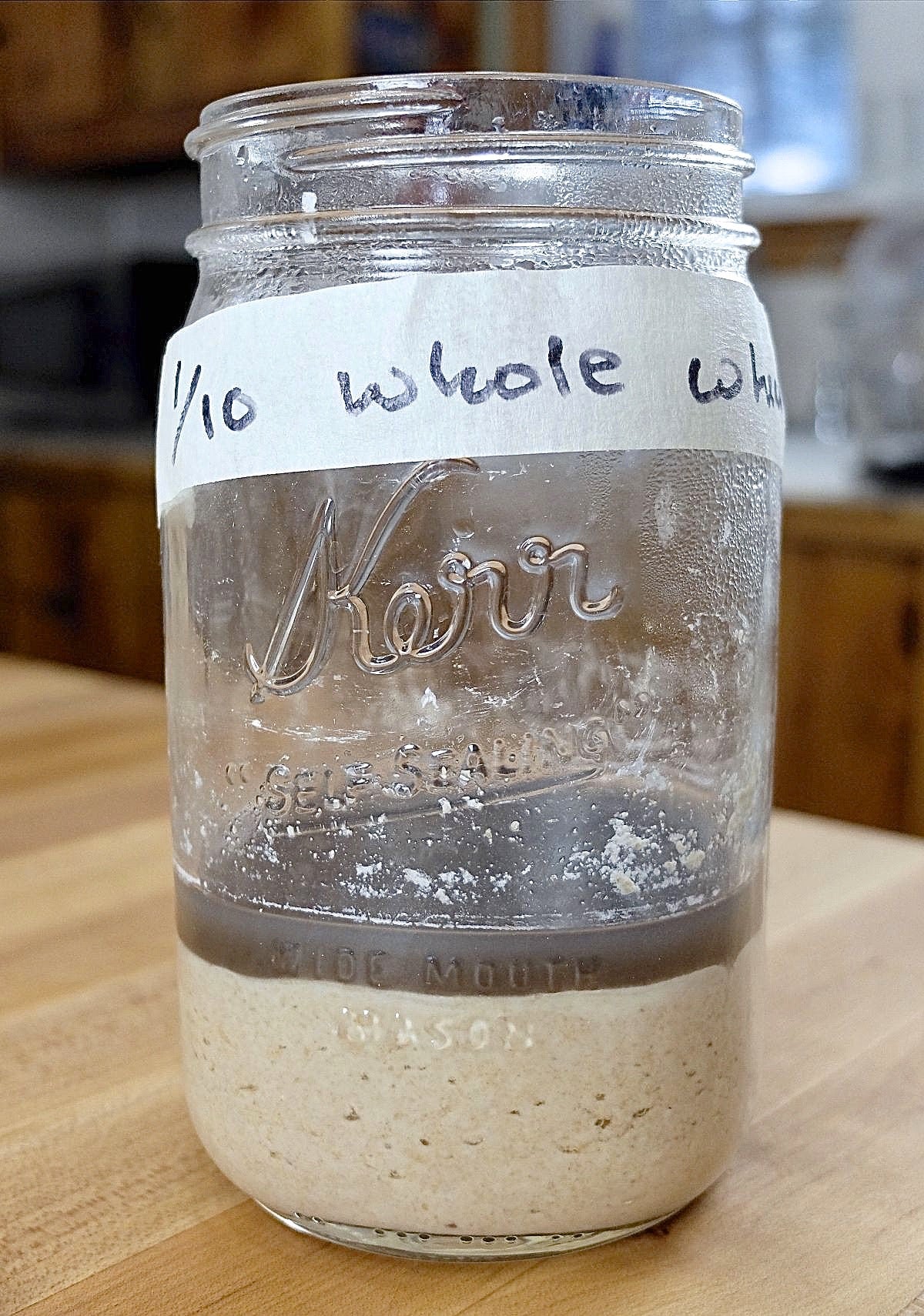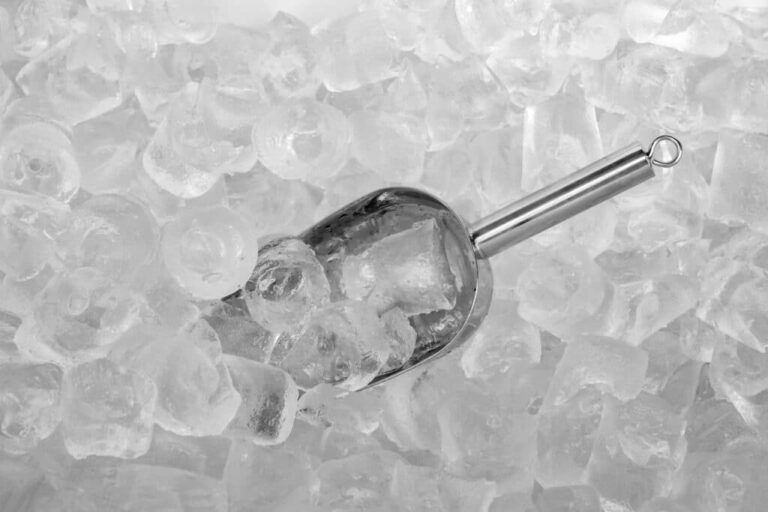How Do I Know If My Sourdough Starter is Bad
If your sourdough starter has a bad odor, is discolored, or has mold growing on it, it is bad and should be discarded. If your starter is not very active or does not double in size after being fed, it may be weak and you may want to consider discarding it and starting over.
If you’re a baker, chances are you’ve heard of sourdough bread. This type of bread is made with a starter, which is a mix of flour and water that’s been left to ferment. The fermentation process gives the bread its distinctive sour taste.
If you’ve ever made sourdough bread, you know that the starter is key. But what happens if your starter goes bad? How can you tell if it’s time to start over with a new one?
There are a few telltale signs that your starter has gone bad. First, it will stop bubbling and appearing active. Second, it will develop mold or other growths on the surface.
Finally, it will start to smell unpleasant. If you see any of these signs, it’s time to toss your starter and start fresh.
Luckily, it’s easy to make a new starter from scratch.
Just mix some flour and water together and let it sit out for a few days until it becomes active again. Then you’ll be back in business baking delicious sourdough bread!
How Do I Know If My Sourdough Starter is Alive
When you first mix together a sourdough starter, it may not look like much. Just a few days later, however, you should see some signs of life – bubbles forming on the surface of the starter. If you don’t see any evidence of bubbling after a few days, your starter may be dead.
There are a few other things you can do to check if your starter is still alive and kicking. One is to give it a smell test – does it smell sour and yeasty? If so, it’s probably still good to use.
You can also give it the float test – drop a small piece of the starter into a bowl of water. If it floats, that means there’s enough carbon dioxide present for fermentation to occur.
If your sourdough starter isn’t showing any signs of life, don’t despair!
There are a few things you can do to revive it. First, make sure you’re using fresh ingredients – flour that hasn’t been sitting around for months and water that doesn’t contain chlorine. Second, try increasing the temperature – starters thrive in warm environments (around 70-80 degrees Fahrenheit).
Finally, feed your starter more often – every 12 hours or so should do the trick.
With a little care and attention, your sourdough starter will be good as new in no time!
How to Revive Sourdough Starter
Sourdough starter is a fermented dough made from flour and water. It’s used to make sourdough bread, which has a signature tangy flavor. The fermentation process creates lactic acid, which gives sourdough its characteristic taste.
If you’ve been keeping your sourdough starter alive and well, congratulations! You’re a pro at this whole bread-baking thing. But if you’ve let your starter go dormant (or worse, killed it), don’t despair—it’s easy to revive.
Here’s how:
1) Start with fresh ingredients. If your starter is more than a few weeks old, ditch it and start over with fresh flour and water.
A new starter will be much more vigorous and easier to revive than an old one.
2) Feed your starter regularly. Starters need to be fed (with more flour and water) every few days to stay alive.
If you’ve neglected yours for awhile, it will need some extra TLC to get going again. Feed it twice a day for the first few days, then once a day after that until it’s back to its normal routine.
3) Keep it warm.
Sourdough starters are happiest at about 70 degrees Fahrenheit—warmer than room temperature but not hot enough to kill the yeast cells (which can happen above 120 degrees). If your house is on the cooler side, try placing the starter on top of the fridge or in another warm spot in your kitchen.
With a little love and care, you can bring even the most neglected sourdough starter back to life!
What is Wrong With My Sourdough Starter
Sourdough starters are a key ingredient in baking traditional sourdough bread. However, sometimes starter problems can occur, resulting in bread that is not as flavorful or rise as well. Here are some common issues that can occur with sourdough starters, and how to fix them:
1) The starter is too young and hasn’t had time to develop enough flavor. This is the most common issue when first starting out with sourdough baking. The solution is simply to give the starter more time – keep feeding it regularly (every day or two), and eventually it will develop a robust flavor.
2) The starter has been neglected and isn’t being fed regularly. If you’ve let your starter go for too long without feeding it, it will become weak and its flavor will suffer. To revive a neglected starter, start by feeding it twice a day for several days, then once a day after that.
It should start to show signs of life within a week or so.
3) Thestarter has been overfed and is now too active. If your starter is bubbling away vigorously and seems almost alive, it’s probably been overfed.
To calm an overactive starter down, simply reduce the amount of flour you’re using when you feed it (e.g., if you’re normally using 1 cup of flour, switch to 1/2 cup).
What Does Bad Sourdough Starter Smell Like
If your sourdough starter smells bad, it’s likely due to one of two things: either it’s gone bad, or you’ve simply forgotten to feed it. If your starter has been sitting out for more than a week without being fed, it will start to smell sour and alcoholic. This is because the yeast in the starter is running out of food and beginning to starve.
If you see any mold growing on your starter, or if it smells rank or rotten, then it has definitely gone bad and should be discarded.
If your starter doesn’t smell bad but you’re still having trouble getting it to rise, then the most likely culprit is that you’ve forgotten to feed it. Sourdough starters need to be fed regularly (usually once a week) in order to stay alive and active.
You can tell if your starter needs to be fed if it looks dry or dormant. Simply mix some flour and water together and add it to your starter jar, stirring well until everything is combined. Then let your starter sit out at room temperature for a few hours so that the yeast can start feasting on the new food!
How to Know If Sourdough Starter is Ready
If you’ve ever made or bought sourdough bread, you know that a key ingredient is sourdough starter. But what exactly is sourdough starter, and how can you tell if it’s ready to use?
Sourdough starter is a mix of flour and water that’s been fermented by wild yeast.
This process gives the starter its characteristic tangy flavor and slightly acidic pH. The fermentation also creates an environment that’s conducive to the growth of beneficial bacteria, which can help with digestion.
When sourdough starter is first mixed, it will be quite liquidy. After a few days, however, it should become thicker and more viscous.
You may also see some bubbles forming on the surface as the fermentation process gets underway.
Once your starter has thickened and begun to form bubbles, it’s ready to use in baking! If you’re not ready to use it right away, you can store it in the fridge for up to a week or so.
Just make sure to give it a stir before using it, as the fermentation process will continue even at lower temperatures.

Credit: www.kingarthurbaking.com
What Does Sourdough Starter Look Like When It Goes Bad?
If your sourdough starter isn’t looking so great, there’s no need to worry. It’s easy to tell if your starter has gone bad, and there are a few simple things you can do to revive it.
When sourdough starter goes bad, it will usually start to form a thick white film on the surface of the liquid.
The starter may also start to separate into layers, with a clear layer of water sitting on top of a thicker layer of starter. If you see any mold growing on the surface of your starter, it’s definitely time to throw it out and start fresh.
If your sourdough starter isn’t looking its best, try stirring it vigorously to incorporate any separated layers back together.
If this doesn’t help, you can add some fresh flour and water to thestarter and give it a good stir. Let the mixture sit for a few hours before using it again in your baking recipes.
How Do I Know If My Sourdough Starter is Good?
If you’ve been nurturing your sourdough starter and it’s been a few days (or weeks) since you last used it, you may be wondering if it’s still good. Here are a few signs that will help you determine whether or not your starter is still viable:
1. The smell: A healthy sourdough starter should have a pleasantly sour smell.
If it smells bad or off, it’s probably time to start over.
2. The appearance: A healthy starter should be smooth and creamy, with no lumps or watery liquid separating from the main mass. If your starter has developed a thick crust on top, this is normal and can simply be stirred back in.
3. The bubbles: A sure sign of a healthy starter are tiny bubbles throughout the mixture. This means that the yeast is active and doing its job!
4. The taste: Of course, one of the best ways to tell if your starter is still good is to give it a taste test.
It should have a mildly sour flavor with no unpleasant aftertaste.
How Long Does It Take for Sourdough Starter to Go Bad?
If you don’t use your sourdough starter regularly, it will eventually go bad. The specific time frame will depend on how well you take care of your starter and what type of flour you’re using. Generally speaking, a sourdough starter made with all-purpose flour will last about two weeks without being used.
A whole wheat sourdough starter may only last one week.
To extend the life of your sourdough starter, make sure to keep it in a covered container in the fridge. Every few days, give it a stir to help keep the yeast and bacteria alive.
If you see any mold growing on the surface of your starter, throw it out immediately and start over with a new batch. With proper care, your sourdough starter should last for several months in the fridge.
What Should Sourdough Starter Smell Like?
Sourdough starter is a fermented dough made from flour and water that’s used to make sourdough bread. It should have a slightly sour, yeasty smell. The flavor of your starter will depend on the type of flour you use and how long you ferment it.
Troubleshooting Your New Sourdough Starter
Conclusion
If you’re wondering whether or not your sourdough starter is bad, there are a few things you can look for. First, check the color of your starter. If it’s brown or black, it’s probably bad.
Second, smell your starter. If it smells sour or vinegary, it’s probably still good. Finally, taste your starter.
If it tastes sour, it’s still good; if it doesn’t taste sour, it’s probably bad.






